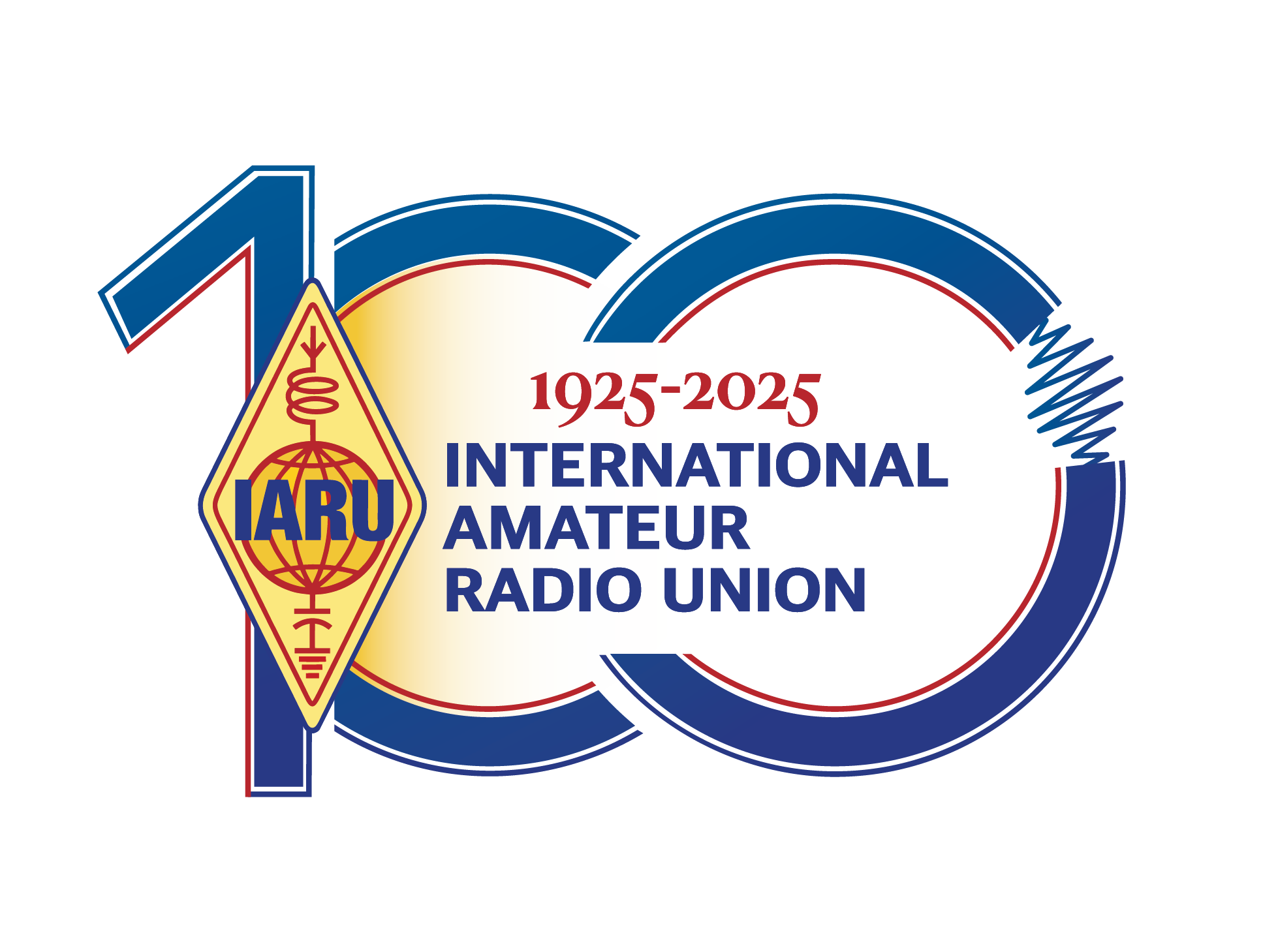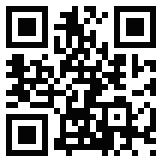How it all started - amateur radio during the first Estonian Republic
The first evidence about receiving broadcast signals in Estonia is dating back to the early 1920s, but the first Estonian broadcast transmission itself was held on May 11, 1924 from a station located at Haapsalu. By that time, three schoolboys from Pärnu - Eugen Tumma, Vitali Aleksandrov-Suigussaar and Karl Olof Leesment had already learned something about amateur radio as a hobby. 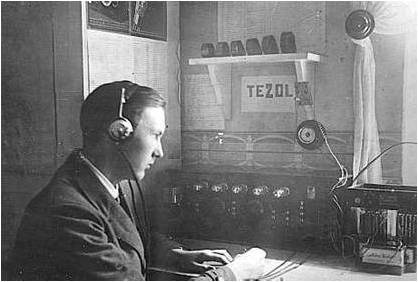
On August 5th, 1924 K.O. Leesment (on photo) completed a short-wave receiver to listen to amateur radio traffic of European hams – and this date is considered as the start for the short-wave ham radio in the country. In the spring of 1926 V. Suigussaar had his first proven amateur radio contact on air (though there is another opinion, that Leesment managed to have the 1st 2-way amateur radio contact from Estonia already in 1924 - but there is no documented proof to it). As there was no institution existing at that time in Estonia to regulate such activity, guys invented the call-signs by their own. For example E. Tumma used the call TE-XX. The prefix ES in Estonia was introduced since January 1st, 1929.
On March 1st, 1935 the Estonian Radio Amateurs Union (ERAÜ) was officially registered by the Ministry of Internal Affairs as an organization uniting amateur radio activity of the country. This fact marks the “official birth” of the organized amateur radio in Estonia. The first meeting of the society was held on September 22nd 1935 in Tallinn, where the first board was elected. The board members were - Arnold Isotamm (ES5F) as the president, vice president Ants Pärjel (ES7C), secretary Vitali Suigussaar (ES6C), treasurer Aleksander Rähn (ES3DW) and Richard Paide (ES5C) as a member.
On September 1st, 1938 ERAÜ became a member of IARU. During the period 1924-1940 the total number of known radio amateurs (both – licensed and “unlis”) was 56. Many of them were actively working on air, achieving contacts with all continents (first WAC in Estonia was completed in 1935 by ES7C), taking part in the contests of these days, organising the first field day events etc. Unfortunately their activity was interrupted by the World War II. With the military occupation of Estonia by the Soviet Red Army in 1940 amateur radio in the country was prohibited and most of radio equipment was confiscated. It is sad to mention that most of the pre-war radio amateurs of Estonia never got back to their hobby again – many were arrested and killed by the “soviet authorities”, some perished in the war, some never dared to give any notice about their activities in the 1930-s. Some also luckily managed to escape to the west and even had a chance to return to ham radio – yet, they were just a few...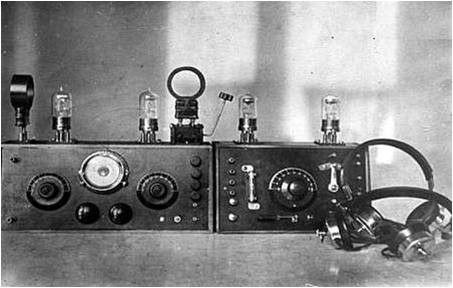
See the presentation of the period's amateur radio in Estonia here!
The list of ERAÜ members before the WW II
Soviet years – UR2 time
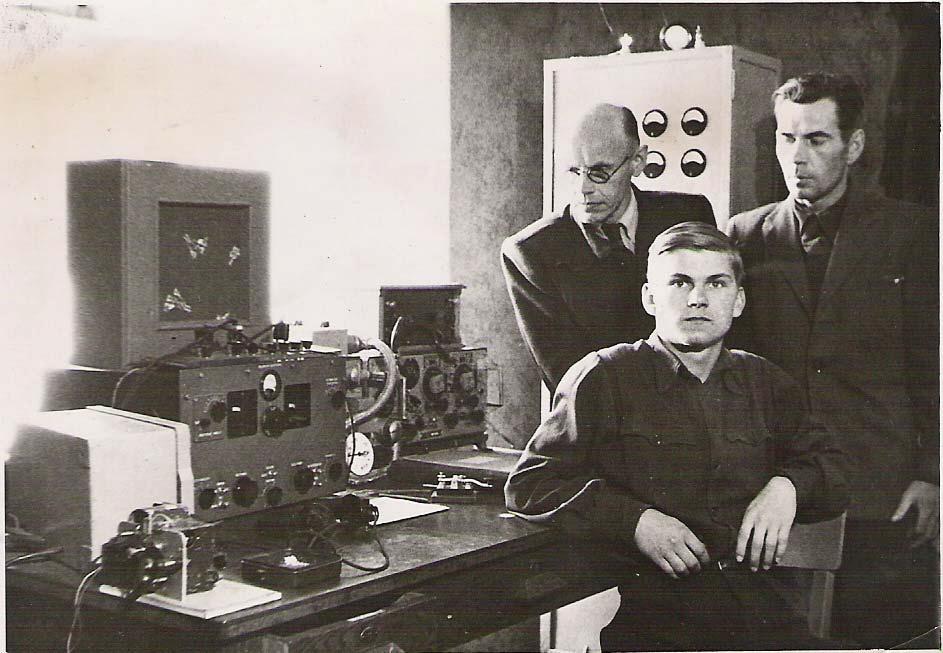
After the war it took a few years to restore amateur radio as a hobby and to “return” to the world. The first radio and communication clubs were founded under the supervision of military and ideological Soviet organization OSOAVIAHIM to guarantee training of military communication specialists for army needs. Nevertheless it was a suitable “cover” to go on with amateur radio at that time. So the first post-war amateur radio club station UR2KAA (on photo) started in 1947 in Tallinn. The main organizers here had also roots in the hobby back in 1930-ies – like A.Isotamm (ex ES5F) and A.Jätmar (ex ES4F), but they never restored their individual licenses. Soon other regional club-stations were founded – UR2KAE in Tartu and UR2KAC in Rakvere were the firsts. Usually home built transmitters were used, receivers originated from the Red Army mainly.
The club stations were bringing new young people to the hobby – Roland Kesker (UR2AE, the chief of UR2KAA), Valler Kukk (later ES1TM), Kaljo Tuul (later ES1AB), Heiki Kallas (UR2AW/ES1AW), Arvo Kallaste (UR2CW/ES1CW), Ülo Rätsep (UR2CR/ES1CR), Teolan Tomson (UR2AO/ES1AO) and Enn Lohk (UR2AR/ES1AR) are some to be mentioned in Tallinn. In Tartu we should name Karl Kallemaa (UR2BU/ES5D) who became a ham already in 1934 (then ES3YY) and from 1936 up to 1940 was ES5D, also Eino Soomets (UR2DE/ES5DE), Heino Raudsepp (UR2DX) and Ilmo Juksaar (UR2CQ) were active.
The beginning of 1950s brought several limitations to the hobby in the Soviet Union. Since 1950 it was allowed to have contacts only with radio amateurs from the other Soviet republics or socialist countries. Almost no new amateurs were licensed and practically nothing happened in ham radio during several years. New “fresh” air was let in only after 1956 when many of those limitations were taken off or loosened and the hobby got a chance to develop further. In 1960 the total number of licensed radio amateurs in Soviet Estonia was 92.
While the traditional transmit modes so far had been CW and AM, then 1960 saw a breakthrough of SSB in phone communication. Enn Lohk (then UR2AR) had the first two-way SSB contact from Estonia on January 7, 1960 and quickly became the leader in implementing this mode in the whole Soviet Union. He was also the first in the USSR to get the “WAZ TWO-WAY SSB” award. Karl Kallemaa (then UR2BU) was one of the pioneers in the Soviet Union on VHF - in 1959 he accomplished the first contact via Aurora on 144 MHz and in 1961 managed to complete the first meteor scatter QSO on 2m band. We should also mention another “first” from that time - Teolan Tomson (then UR2AO) was the first radio amateur in the USSR to get the 5BDXCC award (award no 141 issued). 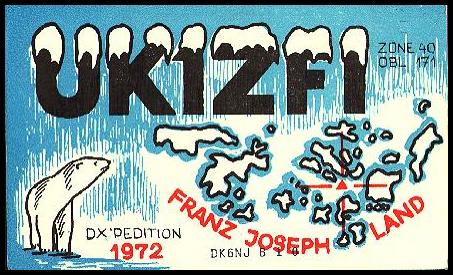
An international recognition came when Enn Lohk (UR2AR) and Tõnu Elhi (then UR2DW) organized a DX expedition to Franz Joseph Land in 1972, which was awarded as the best amateur radio expedition of the year! So, Estonians were quite active in all fields of amateur radio known and used during this period.
A step forward in the development of the hobby was the foundation of the Estonian Radio Sports Federation in 1960 that was a parallel structure to DOSAAF (a Soviet military-ideological propaganda organization ruling amateur radio also) and was meant to increase the communication and contesting skills of operators. The Federation started a tradition of annual amateur radio summer camps in Estonia, the first one was held in 1964 at Lake Võrtsjärv. Estonian hams were frequently participating in contests, both world-wide and inside Soviet Union. Many of them were awarded high sports degrees common at that time and two Estonian operators, Vjatsheslav Krivoshei (UR2QI) and Vello Priiman (UR2QD) got titles of “international master of sports” due to their excellent achievements in international contesting in the late 1970s and early 1980s.
In 1979 UK2RDX (later ES2WX) started its activities under the leadership of Toomas Kull (UR2RJ, later ES2RJ) and soon this club became the most well-known Estonian HF station on air, especially in contests. In DX-ing Enn Lohk (UR2AR) and Vello Priiman (UR2QD) achieved places in DXCC Honor Roll, Albert Matikainen (UR2EQ, now ES4EQ) was the pioneer in VHF amateur radio satellite contacts in Estonia and the first Estonian EME contact was held by Ants Randmaa (UR2RQT, now ES6RQ) in 1982 on 144 MHz.
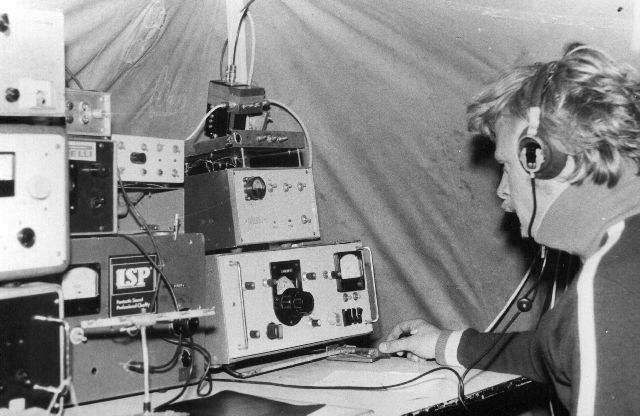
Probably the best sports’ achievement of the period was the hat-trick of the Estonian VHF radio sports team at the USSR Team Championships in Klaipeda in 1989 where the three top places were won by Estonians - Toivo Hallikivi (UR2RRR/ES2RR), Toomas Kull (UR2RJ/ES2RJ - at the VHF station on photo) and Toivo Kasonen (UR2RDJ/ES2DJ) won individual medals next to the team champion’s title.
Unfortunately we have to bring up some odd aspects of the time related to the ideological background of amateur radio in the Soviet Union. As contacts with the “capitalist world” were definitely a constant “ideological threat” to the Soviet ideology and propaganda machine, then hams in the USSR were quite closely followed and checked. So it happened that some innocent remarks or a certain on-air acquaintance could serve for more serious consequences and not so very pleasant meetings with KGB or similar institutions. Single cases are known when an Estonian ham had to spend certain time in jail because of too close relationships with the world outside.
ES is back!
It is remarkable that Estonian hams restored their pre-war identity before the state itself could regain independence from the USSR. Indeed, ES calls were back on air since January 1st 1990. Actually it could happen because of the fact that ES prefix was among the prefixes registered for the Soviet Union (it was handed over after Estonia was occupied and incorporated to the USSR in 1940) and because the Baltic Republics did a good lobby in Moscow to get their old call-signs back. The next logical step – restoration of the Estonian amateur radio society was to be made only after the actual independence was achieved. Fortunately, the "big" history was generous and did not let us to wait for too long – so in the autumn of 1991 Estonian hams could make their own “small” history once again. Yet, we have to mention, that part of Estonian ham community was most actively involved in the historic events of August 1991 by helping with alternative communication channels, but also causing radio interference to Soviet tanks in the most critical days of August in Tallinn.
As the period was tough and there was a lack of gasoline then it was decided that the restoration meeting of the society would be held in the mood of real amateur radio – on air. So it happened – on December 14th 1991 a meeting of the elected regional amateur radio representatives was held on 80m band (3645 kHz) where they voted to restore the Estonian Radio Amateurs Union and elected the first board of the society after the World War II. The board included Enn Lohk - the president (ES1AR), Arvo Pihl (ES5MC), Ako Põhako (ES8AY), Albert Noor (ES0CB) and Jaan Nikker (ES3GZ). In June 1992 IARU officially recognized the restoration of ERAÜ and as the society was never expelled from IARU, it confirmed the legitimacy and continuous membership of the Estonian organization in the world-wide institution of amateur radio. See the historic IARU document here!
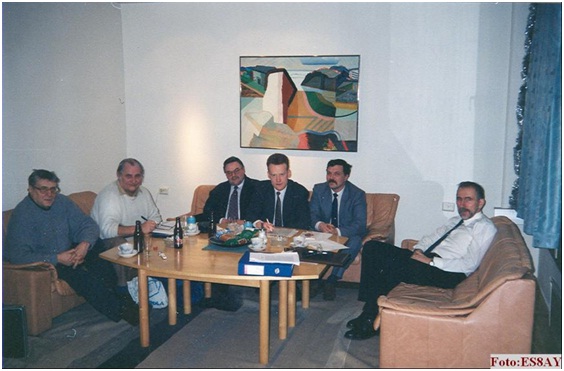
On photo: ERAU Board meeting in Tallinn (1995).
It was not easy to build up an organization without almost any financial support from the state and relying barely on the membership fees. The early 1990s were quite hard to the whole young country and most of the hams had to solve their families’ every day existence problems in the first place – thus it often happened that the hobby had to suffer.
Nevertheless we can name several achievements of the organized amateur radio activity from this period. The foundation of ES-QTC in 1990 – i.e. a true regular amateur radio publication issued once per quarter was one to mention. The good old tradition of annual summer camps was kept alive and developed further to unite the members of the society and to give newcomers a good chance to learn more about the hobby and its leaders.
During the “soviet years” VHF field days were rather popular in summer time – thus it was decided that we need a field day type of event to bring more activity to higher frequencies. So in the summer of 1992 the first international Estonian Open VHF/UHF/SHF Field Day was organized. The contest gained popularity and became an important VHF event of the Baltic Sea region in summer, held every year. HF was to follow soon – the HF Committee of ERAÜ proposed an open contest as ES HF Championship where also other countries can participate. The first contest was held in April 1995 and it is regularily organized since then with rising popularity among close neighbours.
Meanwhile international big HF contesting developed further with huge leaps and once rather high level Estonian short-wave operators did not manage to catch up – equipment and antennas (i.e. financies) began to determine the whole “pot” more than ever. As the former leader in HF contesting UK2RDX (ES2WX) club had lost most of its antennas during the hard times and the situation had changed a lot for them, a smaller team from Tartu run by Arvo Pihl (ES5MC), Toomas Soomets (ES5RY) and Juhan Põldvere (ES5QX) became regular representatives of the ES country in big international contests during the 1990-ies. Improving the contest site in South Estonia step by step it managed to reach good international level by the year 2000 and was often giving competition to other big contest stations of Europe. ES5Q and ES9C contest operations of these years should be known to most of the hams involved in this field.
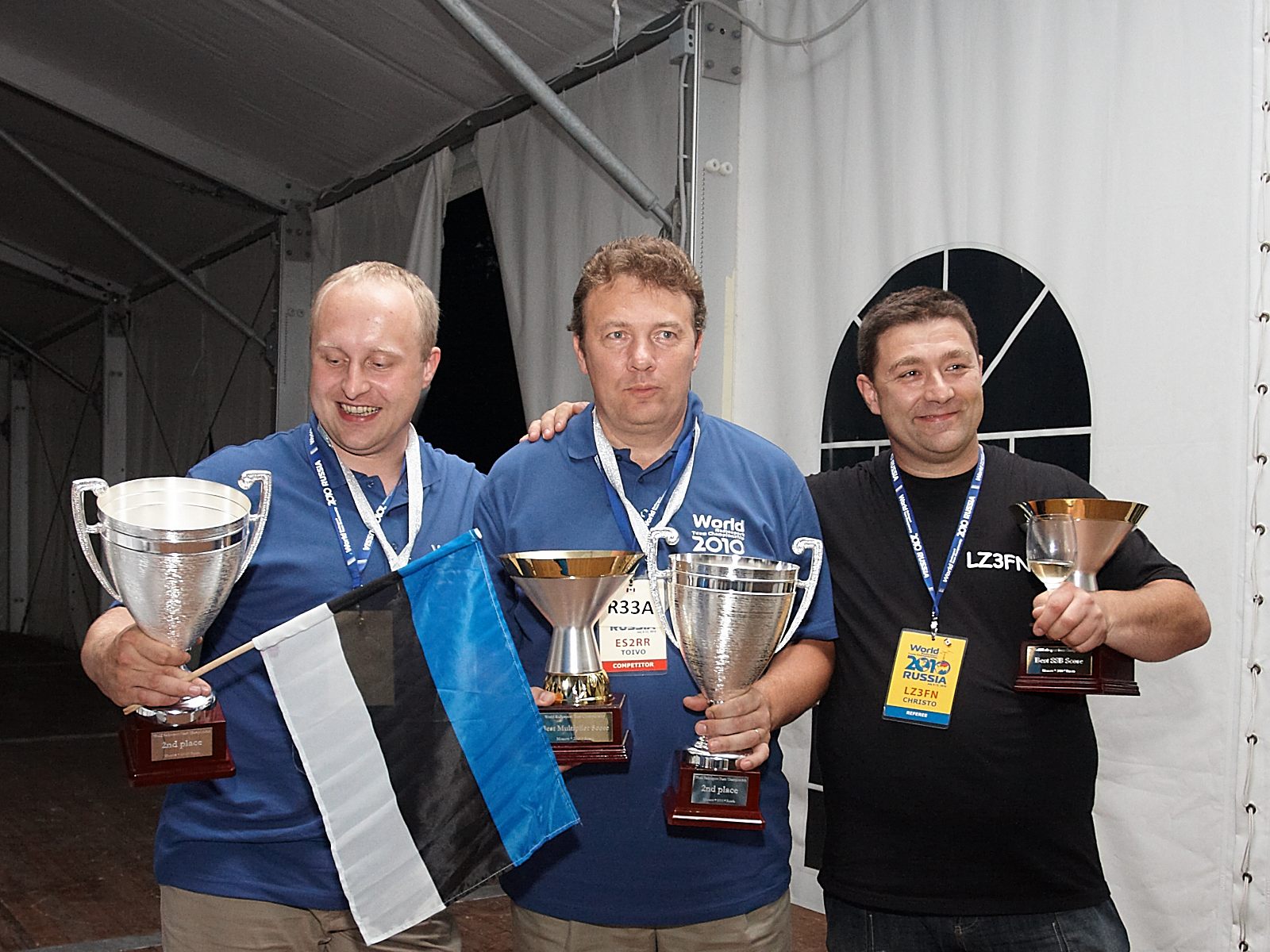
Fortunately the new century brought along also a new leader in the Estonian HF contesting. An active and talented young guy - Tõnno Vähk (ES5TV) started to invest seriously into his super contest-station near Jõgeva and by now has clearly built up a wolrd-class contest site. Along with many top results in big international contests he was also among the firsts here to learn good level SO2R operation techniques and together with Toivo Hallikivi (ES2RR) formed the leading team of the Estonian amateur radio sports. The ultimate proof to it was the 2nd place to Estonian team (ES5TV, ES2RR - on photo with their referee, LZ3FN) at WRTC-2010 in Moscow. Well done! But ES5TV's contest station served well also during the various multi-op CQWW DX and WPX contest events - as we can currently follow a unique situation of holding ALL the European multi-multi top scores by ES9C team, both in cw and ssb! It is obvious that ES is back on the forefront of the world’s contesting and Tõnno has the leading role to play here!
See the presentation of R33A at WRTC-2010.
From the mid 1990s we can say that Estonian radio amateurs were also starting to switch over to commercial ham radio equipment and self constructing became less common. Nevertheless there are many fields in amateur radio where technical skills and excellent knowledge is needed – VHF, but especially UHF, SHF and microwaves are one of them. We have to mention Viljo Allik (ES5PC) as one of the technical leaders of this field in the country today. He was the first to build 2.3, 3.4 and 10 GHz equipments in Estonia and mainly thanks to him and the late ES2RJ ES is no longer a white spot on the European microwave map. A few last years have brought along also EME-activity on microwaves from Estonia, again ES5PC, but also Ants Randmaa (ES6RQ) must be mentioned. In order to introduce technical achievements of our hams to others and to share experience, a tradition of Technical Days was started in 1999 – with the first ERAÜ Technical Day held in Tallinn on the 9th of January. This tradition has now lasted for 20 years already, as the 20th ERAU Technical/Winter Day was held in February 2018!
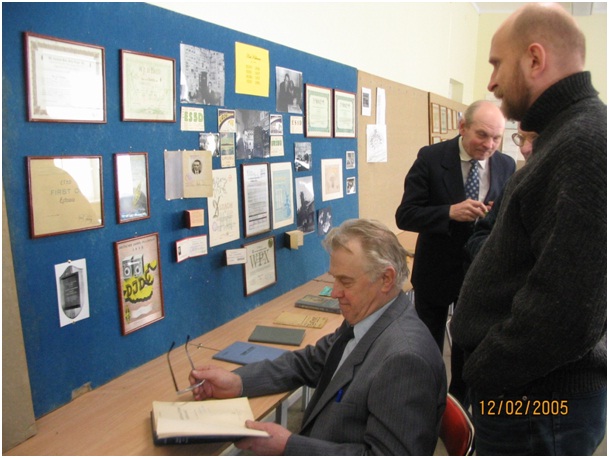
On photo: exhibition about Karl Kallemaa, ES5D on a Winter Day in Tallinn, 2005 - celebtrating 75th Anniversary of ERAU.
In spring of 1999 the president of ERAÜ Enn Lohk (ES1AR) resigned being in charge of the Estonian society since its restoration in 1991. These years were very important to the organization and Enn deserves a special prize and full recognition for the huge work done in building up a functioning society. The annual meeting in Paide elected Tiit Praks (ES7RE) as the new chairman of the board in 1999. Unfortunately his presidency remained very short - Tiit was killed in a car accident in Finland in December 1999. The same month gave us another sad event – the Grand Old Man of the Estonian amateur radio, the honourable member of ERAÜ, Karl Kallemaa, ES5D passed away at the age of 85.
The annual meeting in March 2000 elected a new board to the society, some changes were also made to the committees. Arvo Pihl (ES5MC) was elected as the president of ERAÜ for the next three years becoming the 4th president in the history of the society. Arvo was also re-elected for the second period, so, after 6 years of being in charge another person had to be found to this position, as the maximum consequent time for the chairmanship is limited to two periods. A very logical development was to ask Tõnno Vähk to step forward – and he was elected as the 5th president of ERAÜ in spring 2006. Vice presidency was also given over – Jüri Ruut (ES5JR) became a new member of the board and was nominated to this position.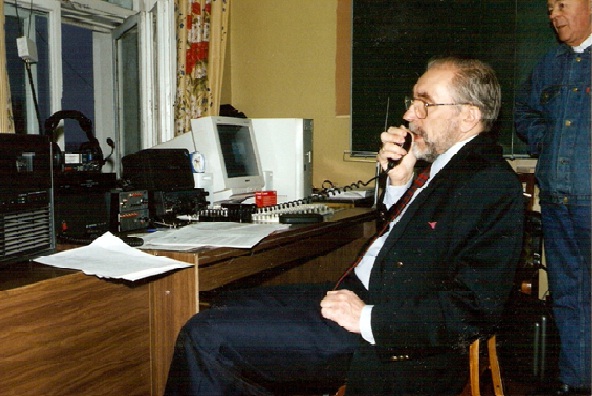 Tõnno and Jüri were leading the society for another 6 years, and in spring 2012 with the new elections Jüri Ruut (ES5JR) became the 6th president of ERAÜ. After 2 periods for Jüri, Kristjan Kass (ES7GM) was elected as a new chairman of the Estonian Radio Amateurs Union in spring 2018, followed by Arvo Pihl (ES2MC) in 2024.
Tõnno and Jüri were leading the society for another 6 years, and in spring 2012 with the new elections Jüri Ruut (ES5JR) became the 6th president of ERAÜ. After 2 periods for Jüri, Kristjan Kass (ES7GM) was elected as a new chairman of the Estonian Radio Amateurs Union in spring 2018, followed by Arvo Pihl (ES2MC) in 2024.
As years pass by, many of our well-known colleagues have unfortunately passed away lately - among them our leaders Enn Lohk (ES1AR), Tõnu Elhi (ES2DW) and Arvo Kallaste (ES1CW). Nevertheless ERAÜ as an organisation is alive and developing further thanks to many contributors and new leaders of our hobby.
A remarkable achievement in 2020 was definitely publishing a comprehensive book on Estonian amateur radio history titled "From morse key to mouse click. Time travel with Estonian radio amateurs". It gives a survey of our hobby from its start in the 1920-ies through the decades up to nowadays - 462 pages, full colour print with many photos, drawings and tables. The book is in Estonian language, but has an English summary at the end (on 7 pages). Written by Teolan Tomson (ES1AO) and Arvo Pihl (ES2MC). The book was presented at the Estonian summer camp on 14 August 2020. See more info about the book here!
Presidents of ERAÜ:
1935 – 1941 Arnold Isotamm (ES5F)
1991 – 1999 Enn Lohk (ES1AR, on photo in 1999, SK March 2018)
1999 – 1999 Tiit Praks (ES7RE, SK Dec. 1999)
2000 – 2006 Arvo Pihl (ES5MC)
2006 – 2012 Tõnno Vähk (ES5TV)
2012 - 2018 Jüri Ruut (ES5JR)
2018 - 2024 Kristjan Kass (ES7GM)
2024 - to date Arvo Pihl (ES2MC)
What are the functions of ERAÜ, why should an Estonian ham be a member?
ERAÜ is the only officially recognized amateur radio organization representing and uniting radio amateurs in Estonia. ERAÜ members can have actual impact on the development of amateur radio as a hobby in the country, its regulations and legislation in the field of communication etc. Hence, only membership guarantees a ham in Estonia an actual participation in the hobby and a status of real and active radio amateur.
The main functions of ERAÜ are:
1. ERAÜ is representing radio amateurs ahead of state institutions – mainly in relationships with the Technical Surveillance Authority. ERAÜ is also the only valid organization to certify and approve the required level of new radio amateurs to join the world’s “ham family”;
2. ERAÜ is representing Estonian radio amateurs on the international level – the society is a member of IARU, is a part of organized ham community ready to help out with its skills and support needed to run alternative communication channels etc;
3. ERAÜ is set for organized ham radio activities in the country to develop amateur radio as a hobby, to offer its members various opportunities for joint events and actions – annual meetings and summer camps, contests etc. – to make them feel one big friendly community with common interests;
4. ERAÜ distributes and generates information and stores the history of amateur radio in Estonia. The basic attributes here to be mentioned are ES-QTC, ERAÜ web-site and forum, mailing lists and regular on air info-bulletins on Saturdays on 80m;
5. ERAÜ is offering several services to its members - running QSL Bureau is the main and most common among them.
Statistics about Amateur Radio in Estonia
Number of physical persons holding ham licenses in Estonia – 590 (01.01.2024);
Number of valid (membership fees paid) ERAÜ members in 2024 – 293.
Full annual membership fee for an Estonian ham in 2025 – 50 EUR,
Annual membership fee for a ham at least 65 years old (2025) – 30 EUR
Family members and retired persons over 80 years old (2025) – 10 EUR.
The text was composed relying on the data and articles presented in the Estonian language section of the web-site.
Arvo Pihl, ES2MC
Chairman of the Board
ERAÜ
 Eesti
Eesti  English
English 

